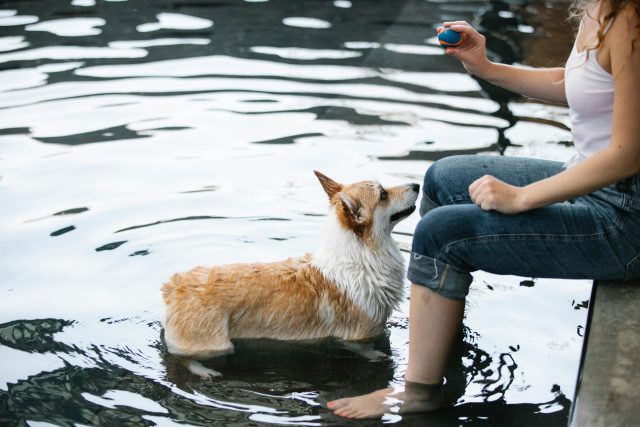Exercise is a crucial aspect of a dog’s overall health and well-being. Regular physical activity helps maintain a healthy weight, improves cardiovascular health, strengthens muscles, and enhances flexibility. Beyond the physical benefits, exercise is vital to a dog’s mental health, reducing stress and anxiety and preventing behavioral issues that stem from boredom and excess energy.
Dogs that do not receive adequate exercise may develop a range of problems, including obesity, joint issues, and destructive behaviors such as chewing, digging, or excessive barking. Understanding the best ways to exercise your dog is essential for ensuring they lead a happy, healthy, and balanced life.

The Best Ways to Exercise Your Dog Indoors
When outdoor conditions are unfavorable, or space is limited, plenty of effective ways to exercise your dog indoors remain. Playing fetch in a hallway can be a simple yet engaging activity. Puzzle toys are excellent for mental stimulation, challenging your dog to solve problems and earn treats. An indoor agility course with household items can provide physical exercise and mental engagement. These activities not only keep your dog active but also help to strengthen the bond between you and your pet.
Find Out Which Dogs Need The Least Exercise
The Best Ways to Exercise Your Dog Outdoors
Outdoor exercise offers a variety of options that can cater to your dog’s energy levels and interests. Walking is the most basic form of exercise and benefits both you and your dog. Running or jogging can be a great way to burn off excess energy, especially for high-energy breeds. Hiking provides a stimulating environment with different terrains and smells, which can be exciting for your dog. Visiting dog parks allows for socialization with other dogs, which is crucial for developing good social skills and behavior. These activities expose your dog to different environments, benefiting their mental stimulation and happiness.
Interactive Play and Training Exercises
Interactive play, such as tug-of-war, frisbee, and hide-and-seek, can be fun and beneficial for your dog. These games encourage physical activity and mental engagement, making exercise enjoyable. Incorporating training exercises into playtime can further enhance the experience. Teaching your dog new tricks or commands during play can provide mental stimulation and reinforce good behavior. This combination of play and training helps to keep your dog physically fit and mentally sharp.
Swimming: A Low-Impact Exercise Option
Swimming is an excellent low-impact exercise option, particularly beneficial for dogs with joint issues or those needing a low-impact activity. It provides a full-body workout without putting stress on the joints. Introducing your dog to water should be done gradually and safely. Use a dog-friendly pool or a safe natural water source, and always supervise your dog while swimming. Providing a life jacket can add an extra layer of safety, especially for dogs that are not strong swimmers. Swimming can be a refreshing and enjoyable way for your dog to stay fit and healthy.
Discover High-Energy Breeds For Active Lifestyles
Tailoring Exercise to Your Dog’s Age and Breed
Tailoring your dog’s exercise routine to their age, breed, and health conditions is important. Puppies have high energy levels but need short, controlled bursts of activity to prevent overexertion. Adult dogs generally require more sustained exercise, while seniors may need gentler, lower-impact activities. Certain breeds have specific exercise needs. For example, herding breeds like Border Collies thrive on high-energy activities, while brachycephalic breeds like Bulldogs may need shorter, less intense exercise sessions due to their breathing difficulties. Understanding your dog’s unique requirements ensures they receive appropriate and beneficial exercise.
Creating a Consistent Exercise Routine
Establishing and maintaining a regular exercise routine is essential for your dog’s overall health and well-being. Consistency helps to regulate their energy levels and prevent behavioral issues. Varying the types of exercises can keep the routine engaging and prevent boredom. A mix of indoor and outdoor activities, interactive play, and training exercises can provide a well-rounded exercise regimen. Scheduling regular exercise sessions at the same time each day can help establish a routine that your dog will look forward to. A consistent exercise routine ensures your dog stays active, healthy, and happy.
Check Out The Best Dogs For Active Households
Conclusion: Best Exercise Tips for a Healthy Dog
Regular exercise is essential for maintaining your dog’s physical and mental health. Understanding the best ways to exercise your dog indoors, outdoors, through interactive play, or low-impact activities like swimming can help you provide the necessary physical and mental stimulation. Tailoring the exercise routine to your dog’s age, breed, and health needs and maintaining a consistent schedule will ensure they lead a healthy, happy, and balanced life. By incorporating various activities, you can keep your dog engaged, prevent boredom, and strengthen the bond you share.

 Toledo, United States.
Toledo, United States.